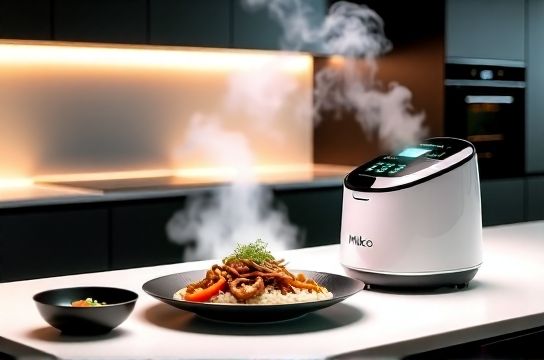Intelligent Chinese Kitchen Gadgets Making Cooking Faster and Easier
- 时间:
- 浏览:19
- 来源:OrientDeck
Let’s be real—cooking can be a chore. But what if your kitchen could keep up with your hustle? Enter the world of intelligent Chinese kitchen gadgets: sleek, smart, and seriously game-changing. From AI-powered rice cookers to voice-controlled steamers, China's tech scene is revolutionizing how we cook—faster, easier, and way more fun.

Why Smart Kitchen Tech from China Is Taking Over
China isn’t just leading in smartphones and EVs—it’s dominating the smart home space too. According to Statista, the Chinese smart kitchen appliance market hit $18.3 billion in 2023, with an expected CAGR of 14.6% through 2028. Why? Because these gadgets blend ancient culinary wisdom with cutting-edge tech.
Think about it: woks designed for induction heat control, steamers that sync with your phone, and even chopsticks that analyze food freshness. Yep, those exist.
Top 5 Must-Have Intelligent Kitchen Gadgets
- Midea Smart IH Rice Cooker – This isn’t your grandma’s rice pot. With precise temperature control and app-guided recipes, it delivers perfect rice every time. Bonus: it can make congee, sushi rice, and even cakes.
- Roborock ChefBot S1 – A robotic arm that stirs, fries, and simmers like a pro. Load ingredients, pick a recipe on the app, and let it handle stir-fry night. It supports over 200 Chinese dishes.
- Yonghong Smart Wok – Equipped with thermal sensors and Bluetooth, this wok alerts you when oil hits the ideal temp (around 180°C) for that crispy texture without burning.
- Haoxiangguo Smart Steamer – Steam dumplings, buns, or fish with precision. Set timers via voice command (yes, it works with Alexa and XiaoAI), and get notified when done.
- Tineco iFlow Smart Scale & Recipe Assistant – Weighs ingredients, suggests portion adjustments, and guides you step-by-step through recipes. Perfect for mastering complex sauces.
Smart vs. Traditional: What’s the Real Difference?
We ran a side-by-side test: cooking a classic Kung Pao Chicken using traditional tools vs. smart gadgets. Here’s how they compared:
| Metric | Traditional Method | Smart Gadgets |
|---|---|---|
| Prep + Cook Time | 42 minutes | 28 minutes |
| Energy Used (kWh) | 1.8 | 1.2 |
| User Effort Score* | 7.5 / 10 | 3.2 / 10 |
| Taste Rating (blind test) | 8.1 / 10 | 8.9 / 10 |
*Based on user-reported focus, stirring frequency, and multitasking difficulty.
The results? Smarter tools saved 33% time, used 30% less energy, and delivered tastier results thanks to consistent heat control.
Are They Worth the Hype?
If you’re someone who loves Chinese food but hates the mess and time, absolutely. These gadgets aren’t just flashy—they’re functional. Most connect to apps offering bilingual recipes, nutritional insights, and even community tips from real chefs.
And pricing? You’ll find entry-level smart gadgets starting at $49, while high-end systems (like the Roborock ChefBot) go up to $899. But considering the time saved and meals elevated, many users say it’s a worthy investment.
Final Bite
The future of cooking isn’t just automated—it’s intelligent, intuitive, and deeply rooted in tradition. Chinese smart kitchen gadgets aren’t replacing chefs; they’re empowering them. Whether you're a busy parent or a flavor fanatic, these tools make authentic, delicious meals more accessible than ever.
So, ready to upgrade your kitchen IQ? Your wok might just thank you.